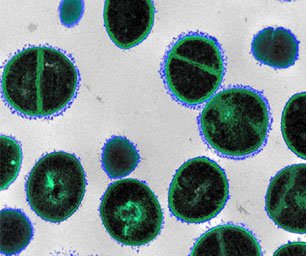NANOPARTICLES WITH ANTI-BIOFILM PROPERTIES

A key characteristic of the biofilm mode of growth is its inherent resistance to antimicrobial substances compared to planktonic (suspension) cultures. This has made biofilms a leading threat to the environment, industry, and human health. For example, biofilms are known to cause product contamination in the food industry, and clog water distribution and filtration systems. In medical settings biofilms are a major cause of infection. It has been estimated that over 60% of hospital treated infections are due to biofilm formation; many of these are either chronic or associated with various medical implants (e.g., catheters and artificial joints). Thus, there is an urgent need to develop new agents/devices that restrict the development of biofilms on abiotic surfaces and/or improve the eradication of existing biofilms.
Nanotechnology can provide new opportunities for preventing and fighting biofilm-mediated problems via atomic-scale tailored nanomaterials. The current materials are based on silver compounds. However, since silver can have cytotoxic affects, there is growing concern regarding long-term use of, and exposure to, silver-based nanomaterials. Our group is exploring the utility of other potential antimicrobial / antibiofilm nanomaterials including metal fluorides, metal oxides and N-halamine nanoparticles which can provide long lasting rechargeable antibiofilm/antimicrobial activity. Work related to these studies involve collaboration with various industrial partners.
